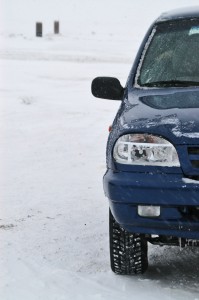Sure, fall just got here, but let’s not wait until the snow falls before we start to prepare our tires for the winter months. Especially if you live in a part of the country where the switch from summer to winter can be quick, there’s not a whole lot of time before winter is upon is. Here are a few things to do to prepare your tires for the upcoming cold and harsh weather:
- Check Them for Cracks, Damage, and Other Tread Wear – This should apply for both your summer tires and your winter tires. You wouldn’t want to switch to damaged tires on your vehicle, or have damaged tires on your car in case of a sudden snowstorm. A great way to see if your tires need replaced is to use the penny trick. Stick a penny in between your tire treads. If you still see Lincoln’s head in its entirety, then your tires legally need to be replaced.
- Get Them Properly Inflated – This would include your spare tire as well as your winter tires. Make sure to go by the owner’s manual and not by the sidewall to find the recommended tire pressure for your tires. To keep your tires at the proper pressure for a longer period time, and to have them resist the colder temperatures better, than use nitrogen tire inflation. While regular air will cause tire pressure to fluctuate as temperatures begin to change over the next few months, pure nitrogen will keep them at the proper pressure longer and more consistently.
- Have Emergency Gear on Hand – Emergency gear would include the tools necessary to change a tire, as well as extra clothing to keep yourself warm, just in case you have to make a change when it’s 10 degrees outside. By extra clothing, we mean gloves, a warm jacket, a blanket, and some snow shoes. It would also be smart to have an ice scraper, a snow shovel and a flashlight on hand to make it easier for you to navigate around your car.
- Know What to Do In Case of an Emergency – This means knowing to do more than to hit the OnStar button or to call roadside assistance. This means knowing how to set up emergency flares or hazard triangles so other drivers can see you. It also means knowing how to use a first aid kit in case someone gets hurt and rescue workers are delayed for whatever reason.
Overall, it’s better to be safe than sorry. Although the weather is nice now and many of us are still safe, we shouldn’t wait until driving condition become dangerous before we start prepare ourselves and our tires for the conditions.






